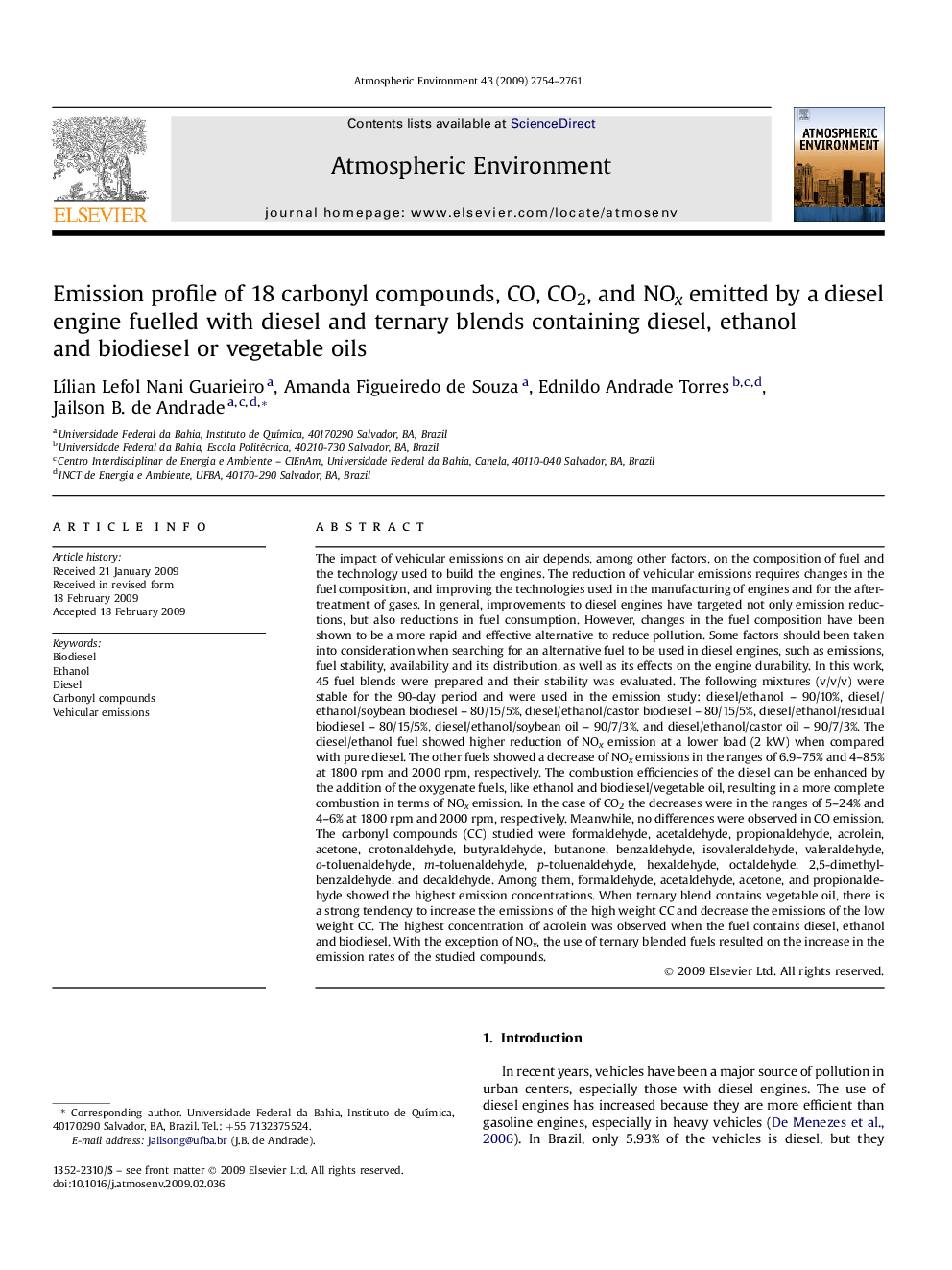| کد مقاله | کد نشریه | سال انتشار | مقاله انگلیسی | نسخه تمام متن |
|---|---|---|---|---|
| 4441946 | 1311130 | 2009 | 8 صفحه PDF | دانلود رایگان |

The impact of vehicular emissions on air depends, among other factors, on the composition of fuel and the technology used to build the engines. The reduction of vehicular emissions requires changes in the fuel composition, and improving the technologies used in the manufacturing of engines and for the after-treatment of gases. In general, improvements to diesel engines have targeted not only emission reductions, but also reductions in fuel consumption. However, changes in the fuel composition have been shown to be a more rapid and effective alternative to reduce pollution. Some factors should been taken into consideration when searching for an alternative fuel to be used in diesel engines, such as emissions, fuel stability, availability and its distribution, as well as its effects on the engine durability. In this work, 45 fuel blends were prepared and their stability was evaluated. The following mixtures (v/v/v) were stable for the 90-day period and were used in the emission study: diesel/ethanol – 90/10%, diesel/ethanol/soybean biodiesel – 80/15/5%, diesel/ethanol/castor biodiesel – 80/15/5%, diesel/ethanol/residual biodiesel – 80/15/5%, diesel/ethanol/soybean oil – 90/7/3%, and diesel/ethanol/castor oil – 90/7/3%. The diesel/ethanol fuel showed higher reduction of NOx emission at a lower load (2 kW) when compared with pure diesel. The other fuels showed a decrease of NOx emissions in the ranges of 6.9–75% and 4–85% at 1800 rpm and 2000 rpm, respectively. The combustion efficiencies of the diesel can be enhanced by the addition of the oxygenate fuels, like ethanol and biodiesel/vegetable oil, resulting in a more complete combustion in terms of NOx emission. In the case of CO2 the decreases were in the ranges of 5–24% and 4–6% at 1800 rpm and 2000 rpm, respectively. Meanwhile, no differences were observed in CO emission. The carbonyl compounds (CC) studied were formaldehyde, acetaldehyde, propionaldehyde, acrolein, acetone, crotonaldehyde, butyraldehyde, butanone, benzaldehyde, isovaleraldehyde, valeraldehyde, o-toluenaldehyde, m-toluenaldehyde, p-toluenaldehyde, hexaldehyde, octaldehyde, 2,5-dimethylbenzaldehyde, and decaldehyde. Among them, formaldehyde, acetaldehyde, acetone, and propionaldehyde showed the highest emission concentrations. When ternary blend contains vegetable oil, there is a strong tendency to increase the emissions of the high weight CC and decrease the emissions of the low weight CC. The highest concentration of acrolein was observed when the fuel contains diesel, ethanol and biodiesel. With the exception of NOx, the use of ternary blended fuels resulted on the increase in the emission rates of the studied compounds.
Journal: Atmospheric Environment - Volume 43, Issue 17, June 2009, Pages 2754–2761